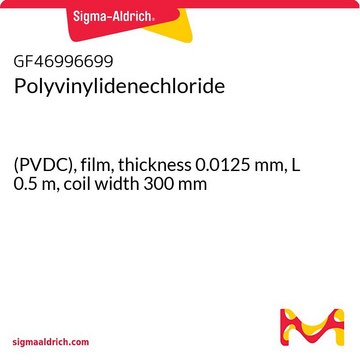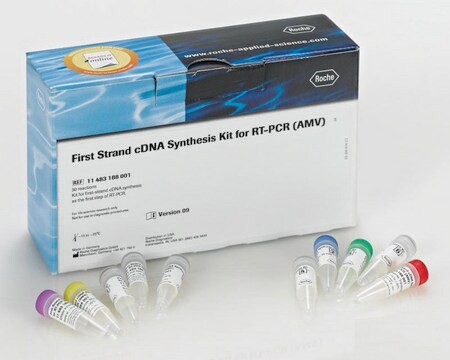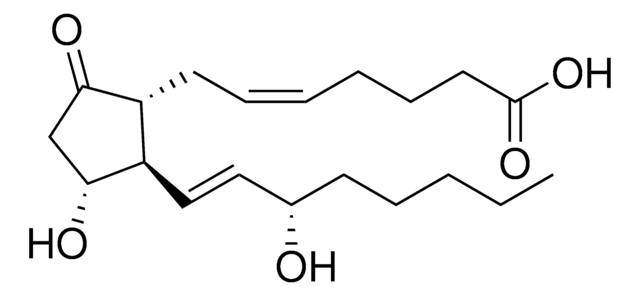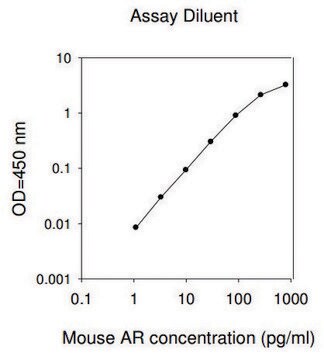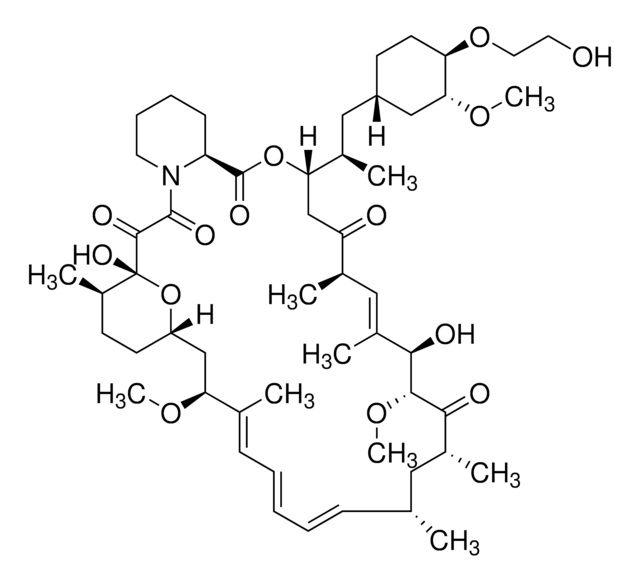RAB0019
Human Amphiregulin ELISA Kit
for serum, plasma, cell culture supernatant and urine
Sinonimo/i:
AR
Autenticatiper visualizzare i prezzi riservati alla tua organizzazione & contrattuali
About This Item
Codice UNSPSC:
41116158
NACRES:
NA.32
Prodotti consigliati
Reattività contro le specie
human
Confezionamento
kit of 96 wells (12 strips x 8 wells)
tecniche
ELISA: suitable
capture ELISA: suitable
input
sample type plasma
sample type cell culture supernatant(s)
sample type urine
sample type serum
assay range
inter-assay cv: <12%
intra-assay cv: <10%
sensitivity: 10 pg/mL
standard curve range: 16.46-4000 pg/mL
Metodo di rivelazione
colorimetric
Condizioni di spedizione
wet ice
Temperatura di conservazione
−20°C
Informazioni sul gene
human ... AREG(374)
Descrizione generale
The Human Amphiregulin (AR) ELISA (Enzyme-Linked Immunosorbent Assay) kit is an in vitro enzyme-linked immunosorbent assay for the quantitative measurement of human AR in serum, plasma, cell culture supernatants and urine.
The AREG (amphiregulin) gene codes for a shedding ectodomain, derived from a transmembrane precursor of 252 amino acids. The encoded protein is released into blood or cellular vicinity through autocrine and paracrine. Areg is predominantly expressed in epithelial, mesenchymal cells and also by active immune cells. The AREG gene is mapped to human chromosome 4q13.3.
The AREG (amphiregulin) gene codes for a shedding ectodomain, derived from a transmembrane precursor of 252 amino acids. The encoded protein is released into blood or cellular vicinity through autocrine and paracrine. Areg is predominantly expressed in epithelial, mesenchymal cells and also by active immune cells. The AREG gene is mapped to human chromosome 4q13.3.
Immunogeno
Recombinant Human Amphiregulin
Applicazioni
Please refer to the attached General ELISA KIT Procedure (sandwich, competitive & Indirect ELISA)
Human Amphiregulin ELISA Kit has been used to estimate the plasma concentration of amphiregulin by ELISA.
Human Amphiregulin ELISA Kit has been used to estimate the plasma concentration of amphiregulin by ELISA.
Azioni biochim/fisiol
Areg (amphiregulin) stimulates growth-signaling pathways via EGF (epidermal growth factor) receptors. Areg participates in the organogenesis of mammary gland. It is regarded as a pro-oncogenic factor and contributes to tumor progression. Upregulation of the AREG gene is observed in cancer and resists chemotherapy. AREG reduces E-cadherin expression in order to promote invasion and progression of ovarian cancer.
Altre note
A sample Certificate of Analysis is available for this product.
Please type the word sample in the text box provided for lot number.
Please type the word sample in the text box provided for lot number.
I componenti del kit sono disponibili anche separatamente
N° Catalogo
Descrizione
SDS
Avvertenze
Warning
Indicazioni di pericolo
Consigli di prudenza
Classi di pericolo
Met. Corr. 1
Codice della classe di stoccaggio
8A - Combustible corrosive hazardous materials
Scegli una delle versioni più recenti:
Possiedi già questo prodotto?
I documenti relativi ai prodotti acquistati recentemente sono disponibili nell’Archivio dei documenti.
Correlation between Trop2 and amphiregulin coexpression and overall survival in gastric cancer.
Zhao W, et al.
Cancer Medicine, 6(5), 994-1001 (2017)
Predictive blood plasma biomarkers for EGFR inhibitor-induced skin rash.
Hichert V, et al.
Oncotarget, 8(21), 35193-35193 (2017)
Sprouty2 inhibits amphiregulin-induced down-regulation of E-cadherin and cell invasion in human ovarian cancer cells.
Cheng J C, et al.
Oncotarget, 7(49), 81645-81645 (2016)
Abnormal amphiregulin expression correlates with gastric cancer prognosis.
Wang B, et al.
Oncotarget, 7(47), 76684-76684 (2016)
Masaru Karakawa et al.
Journal of cellular physiology, 229(12), 1935-1945 (2014-04-09)
The cutaneous T cell-attracting chemokine (CTACK)/CCL27 is indispensable in skin inflammation. CTACK/CCL27 is exclusively produced by epidermal keratinocytes to attract CCR10-expressing T lymphocytes to the skin. We investigated the mechanism of CTACK/CCL27 production from normal human epidermal keratinocytes (NHEKs) by
Il team dei nostri ricercatori vanta grande esperienza in tutte le aree della ricerca quali Life Science, scienza dei materiali, sintesi chimica, cromatografia, discipline analitiche, ecc..
Contatta l'Assistenza Tecnica.